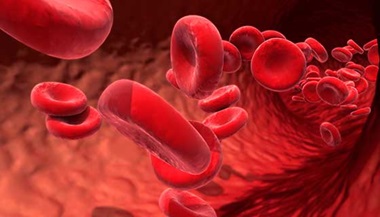Idiopathic Thrombocytopenic Purpura
What is immune thrombocytopenic purpura?
Immune thrombocytopenic purpura (ITP) is a blood disorder characterized by a decrease in the number of platelets in the blood. Platelets are cells in the blood that help stop bleeding. A decrease in platelets can cause easy bruising, bleeding gums, and internal bleeding. This disease is caused by an immune reaction against one's own platelets. It has also been called autoimmune thrombocytopenic purpura.
- Thrombocytopenia means a decreased number of platelets in the blood.
- Purpura refers to the purple discoloring of the skin, as with a bruise.
ITP is a fairly common blood disorder that both children and adults can develop.
There are two forms of ITP:
- Acute thrombocytopenic purpura. This usually affects young children, ages 2 to 6 years old. The symptoms may follow a viral illness, such as chickenpox. Acute ITP usually starts suddenly and the symptoms usually disappear in less than 6 months, often within a few weeks. Treatment is often not needed. The disorder usually does not recur. Acute ITP is the most common form of the disorder.
- Chronic thrombocytopenic purpura. The onset of the disorder can happen at any age, and the symptoms can last a minimum of 6 months, several years, or a lifetime. Adults have this form more often than children do, but it does affect adolescents. Females have it more often than males. Chronic ITP can recur often and requires continual follow-up care with a blood specialist (hematologist).
What causes idiopathic thrombocytopenic purpura?
In ITP, the immune system is stimulated to attack your body's own platelets. Most often this is a result of antibody production against platelets. In a small number of cases, a type of white blood cell called T-cells will directly attack platelets. This immune system error may be a result of any of the following:
- Medications (including over-the-counter medications) can cause an allergy that cross-reacts with platelets.
- Infections, typically viral infections, including the viruses that cause chicken pox, hepatitis C, and AIDS, can prompt antibodies that cross-react with platelets.
- Pregnancy
- Immune disorders, such as rheumatoid arthritis and lupus
- Low-grade lymphomas and leukemias may produce abnormal antibodies against platelet proteins.
- Sometimes the cause of immune thrombocytopenic purpura is not known.
What are the symptoms of idiopathic thrombocytopenic purpura?
Normal platelet count is in the range of 150,000 to 450,000. With ITP, the platelet count is less than 100,000. By the time significant bleeding occurs, you may have a platelet count of less than 10,000. The lower the platelet count, the greater the risk of bleeding.
Because platelets help stop bleeding, the symptoms of ITP are related to increased bleeding. However, each person may experience symptoms differently. Symptoms may include:
- The purple color of the skin after blood has "leaked" under it. A bruise is blood under the skin. Persons with ITP may have large bruises from no known injury. Bruises can appear at the joints of elbows and knees just from movement.
- Tiny red dots under the skin that are a result of very small bleeds.
- Nosebleeds
- Bleeding in the mouth and/or in and around the gums
- Heavy menstrual periods
- Blood in the vomit, urine, or stool
- Bleeding in the head. This is the most dangerous symptom of ITP. Any head injury that occurs when there are not enough platelets to stop the bleeding can be life threatening.
The symptoms of ITP may look like other medical problems. Always consult your health care provider for a diagnosis.
How is idiopathic thrombocytopenic purpura diagnosed?
In addition to a complete medical history and physical exam, you may have these tests:
- Complete blood count (CBC). A measurement of size, number, and maturity of different blood cells in a specific volume of blood (to measure platelets.
- Additional blood and urine tests. These tests are done to measure bleeding time and detect possible infections, including a special blood test called an antiplatelet antibody test.
- Careful review of your medications
Historically, a bone marrow aspiration was required to make a diagnosis of ITP. It may not be absolutely necessary in the face of a positive antiplatelet antibody test, but it is still commonly done to look at the production of platelets and to rule out any abnormal cells the marrow may be producing that could lower platelet counts. A bone marrow aspiration is necessary for a diagnosis if the antiplatelet antibody testing is negative.
How is idiopathic thrombocytopenic purpura treated?
Specific treatment for idiopathic thrombocytopenic purpura will be determined by your health care provider based on:
- Your age, overall health, and medical history
- Extent of the disease
- Your tolerance for specific medications, procedures, or therapies
- Expectations for the course of the disease
- Your opinion or preference
When treatment is necessary, the two most common forms of immediate treatment are steroids and intravenous gamma globulin:
- Steroids. Steroids help prevent bleeding by reducing the rate of platelet destruction. Steroids, if effective, will result in an increase in platelet counts seen within 2 to 3 weeks. Side effects may include irritability, stomach irritation, weight gain, high blood pressure, and acne.
- Intravenous gamma globulin (IVGG). Intravenous gamma globulin (IVGG) is a protein that contains many antibodies and also slows the destruction of platelets. IVGG works faster than steroids (within 24 to 48 hours).
Other treatments for ITP may include:
- Rh immune globulin. This medication temporarily stops the spleen from destroying platelets. You must be Rh positive and have a spleen for this medication to be effective.
- Medication changes. If it is a medication that is the suspected cause, discontinuation or changing the medication may be necessary.
- Infection treatment. If infection is the cause for ITP, then treatment of the infection may result in higher platelet counts.
- Splenectomy. In some cases, your spleen may need to be removed since this is the most active site of antibody mediated platelet destruction. This is considered more often in people with chronic ITP to decrease the rate of platelet destruction.
- Platelet transfusion. People with severe bleeding or about to go into surgery may require platelet transfusion.
- Rituximab (Rituxan). This medication is an antibody produced in a lab against a protein found on the blood cells that make antibodies. It slows the antiplatelet antibody production.
- Romiplostim (N-plate) and eltrombopag (Promacta). These medications were recently approved for the treatment of ITP that has failed other types of treatment. They stimulate the bone marrow to produce more platelets.
- Lifestyle changes. These can include making sure that you use protective gear and that you avoid certain activities.
Key points about immune thrombocytopenic purpura
- Idiopathic thrombocytopenic purpura is a blood disorder characterized by an abnormal decrease in the number of platelets in the blood.
- A decrease in platelets can result in easy bruising, bleeding gums, and internal bleeding.
- ITP may be acute and resolve in less than 6 months, or chronic and last longer than 6 months.
- Treatment options include a variety of medications that can reduce the destruction of platelets or increase their production.
- In some cases, surgery to remove the spleen is necessary.
Next steps
Tips to help you get the most from a visit to your health care provider:
- Before your visit, write down questions you want answered.
- Bring someone with you to help you ask questions and remember what your provider tells you.
- At the visit, write down the names of new medicines, treatments, or tests, and any new instructions your provider gives you.
- If you have a follow-up appointment, write down the date, time, and purpose for that visit.
- Know how you can contact your provider if you have questions.





